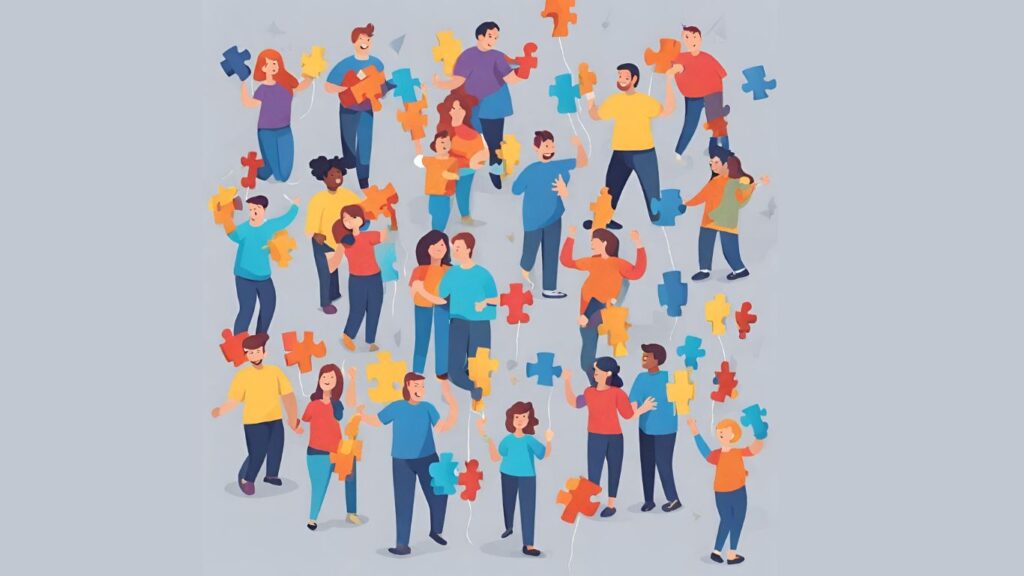Autism Spectrum Disorder (ASD) is a neurodevelopmental disorder that affects communication, social interaction, and behavior. It is a spectrum disorder, which means that it affects individuals differently and to varying degrees.
Defining Autism Spectrum Disorder
According to the American Psychiatric Association, Autism Spectrum Disorder is characterized by persistent deficits in social communication and social interaction across multiple contexts, as well as restricted, repetitive patterns of behavior, interests, or activities.
Dispelling Common Myths
Many common myths about Autism Spectrum Disorder can lead to misunderstanding and stigma. For example, some people believe that individuals with autism lack empathy or are not capable of forming relationships. However, this is not true. People with autism can have rich emotional lives and meaningful relationships, although they may express themselves differently.
Another myth is that autism is caused by bad parenting or a lack of discipline. However, there is no evidence to support this claim. Autism is a complex disorder with multiple genetic and environmental factors.
Recognizing Neurodiversity
It is important to recognize that autism is a form of neurodiversity, which means that it is a natural variation in the human brain. Just as there is diversity in physical characteristics such as height and skin color, there is also diversity in cognitive and neurological functioning.
Effective Communication Strategies
When educating others about autism acceptance, it is important to use effective communication strategies to ensure that the message is clear and easily understood. Here are some strategies that can be used:
Adapting Language for Clarity
One effective communication strategy is to adapt language for clarity. This means using clear, concise language that is easy to understand. It is important to avoid using technical jargon or complex terminology that may be difficult for others to understand. Instead, use simple language and provide examples or visual aids to help illustrate the message.
Using Visual Aids and Supports
Visual aids and supports can help convey information about autism acceptance. For example, using diagrams, pictures, or videos can help to illustrate key concepts and make them more accessible to a wider audience. Visual aids can also be used to support verbal communication, such as using a communication board to help nonverbal individuals express themselves. Providing written materials, such as pamphlets or brochures, can also help provide information about autism acceptance.
In summary, using effective communication strategies is essential when educating others about autism acceptance. Adapting language for clarity and using visual aids and supports can help to ensure that the message is clear and easily understood. By using these strategies, individuals can promote greater understanding and acceptance of autism in their communities.
Fostering Inclusivity and Support
Autism acceptance is about creating a society that is accepting and supportive of individuals with autism. Educating others about autism acceptance is an important step towards creating a more inclusive world. Fostering inclusivity and support is a crucial aspect of autism acceptance. This section will explore some ways to foster inclusivity and support for individuals with autism.
Creating Autism-Friendly Environments
Creating autism-friendly environments is an important step toward fostering inclusivity and support for individuals with autism. An autism-friendly environment is designed to be comfortable and accessible for individuals with autism. Some ways to create an autism-friendly environment include:
- Sensory-friendly spaces: Individuals with autism can be sensitive to certain sounds, lights, or textures. Creating sensory-friendly spaces can help individuals with autism feel more comfortable and less overwhelmed. This can be achieved by using dimmer lighting, soft music, and comfortable seating.
- Visual aids: Visual aids such as pictures, diagrams, and videos can help individuals with autism understand information better. Using visual aids can also help individuals with autism communicate their needs and preferences.
- Clear communication: Clear communication is important for individuals with autism. Using simple language, avoiding sarcasm, and providing clear instructions can help individuals with autism understand what is expected of them.
Promoting Social Inclusion
Promoting social inclusion is another important step towards fostering inclusivity and support for individuals with autism. Social inclusion means ensuring that individuals with autism have the opportunity to participate in social activities and events. Some ways to promote social inclusion include:
- Peer support: Peer support can be a great way for individuals with autism to connect with others who share similar experiences. Peer support groups can provide individuals with autism with a sense of belonging and community.
- Inclusive activities: Providing inclusive activities can help individuals with autism participate in social activities. Inclusive activities are activities that are designed to be accessible to individuals with autism. This can include activities such as sensory-friendly movie screenings or inclusive sports programs.
- Education and awareness: Educating others about autism and promoting autism acceptance can help create a more inclusive society. This can be achieved by providing training and education to teachers, employers, and other members of the community.
Advocacy and Awareness
Autism acceptance is a crucial issue that requires widespread awareness and advocacy efforts. Educating others about autism acceptance can be achieved through various means, including community events and social media outreach.
Organizing Community Events
Organizing community events is an effective way to raise awareness about autism acceptance. These events can include workshops, conferences, and seminars that provide education and resources for families, educators, and professionals. It is important to invite speakers who are knowledgeable about autism and can share their experiences and insights.
Another way to raise awareness is to organize fundraising events that support autism acceptance organizations. These events can include walks, runs, and other athletic events that bring people together and raise funds for a good cause.
Utilizing Social Media for Outreach
Social media is a powerful tool for reaching a large audience and spreading awareness about autism acceptance. Organizations and individuals can use social media platforms such as Facebook, Twitter, and Instagram to share information and resources about autism acceptance.
It is important to use social media effectively by creating engaging content that is shareable and informative. This can include infographics, videos, and blog posts that provide insights into the experiences of individuals with autism and their families.
Resources and Education
Accessing Reliable Information
When it comes to educating others about autism acceptance, it is important to have access to reliable information. There are many online resources available that can provide accurate and up-to-date information about autism. One such resource is the Autism Society of America website. They provide a wealth of information on autism, including facts and statistics, treatment options, and advocacy resources. Another reliable resource is the Autism Science Foundation website, which provides information on the latest research findings related to autism.
In addition to these online resources, there are also many books and journals available that can provide valuable information on autism. One such book is “The Autistic Brain” by Temple Grandin and Richard Panek, which provides an insightful look into the world of autism from the perspective of someone with autism. Another valuable resource is the Journal of Autism and Developmental Disorders, which publishes research articles on autism and related disorders.
Training Programs and Workshops
Another way to educate others about autism acceptance is through training programs and workshops. These programs can provide valuable information on how to interact with individuals with autism and how to create a more inclusive environment. One such program is the Autism Spectrum Disorder Certificate Program offered by the University of California, Davis Extension. This program provides training on autism diagnosis, treatment, and support.
Another option is to attend workshops or conferences focused on autism acceptance. For example, the Autism Society National Conference is an annual event that brings together individuals with autism, their families, and professionals in the field of autism to share information and strategies for promoting autism acceptance. Additionally, many local organizations offer workshops and training programs on autism acceptance, so it is worth checking with your local autism advocacy group to see what resources are available in your area.







